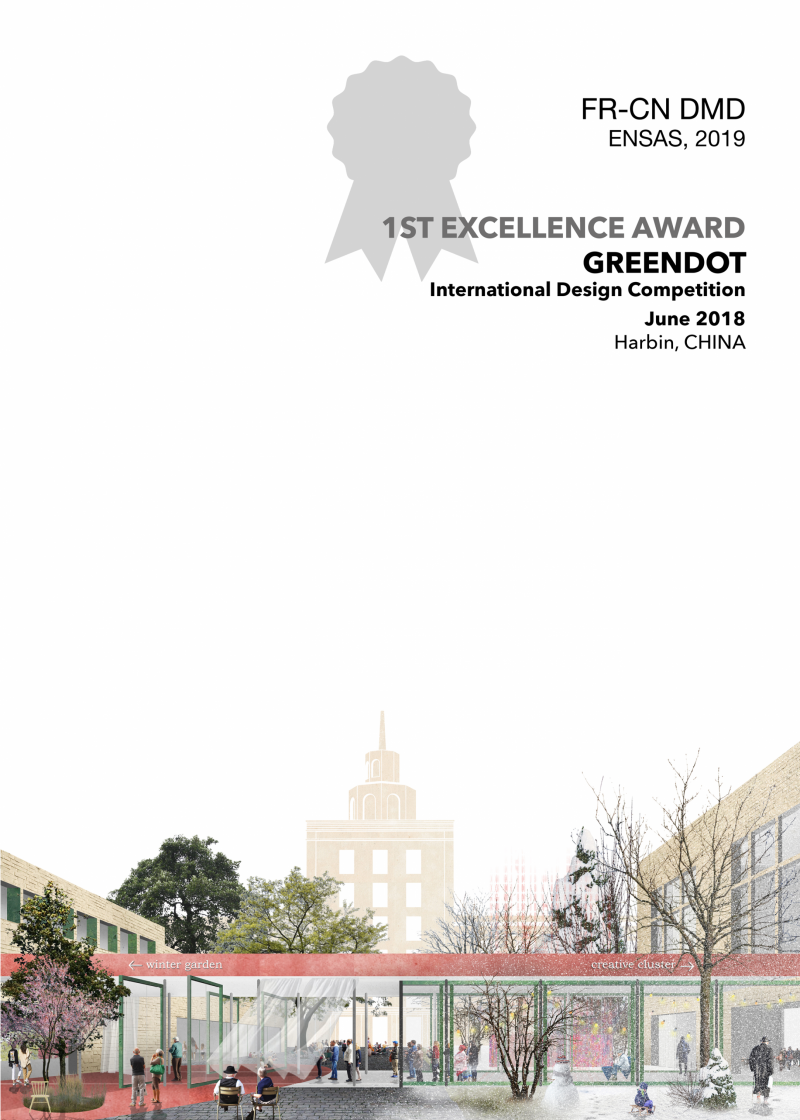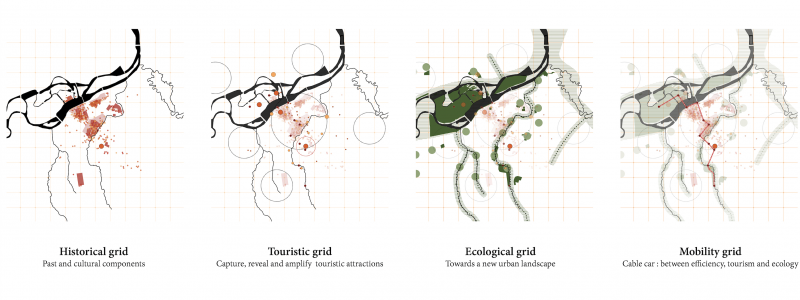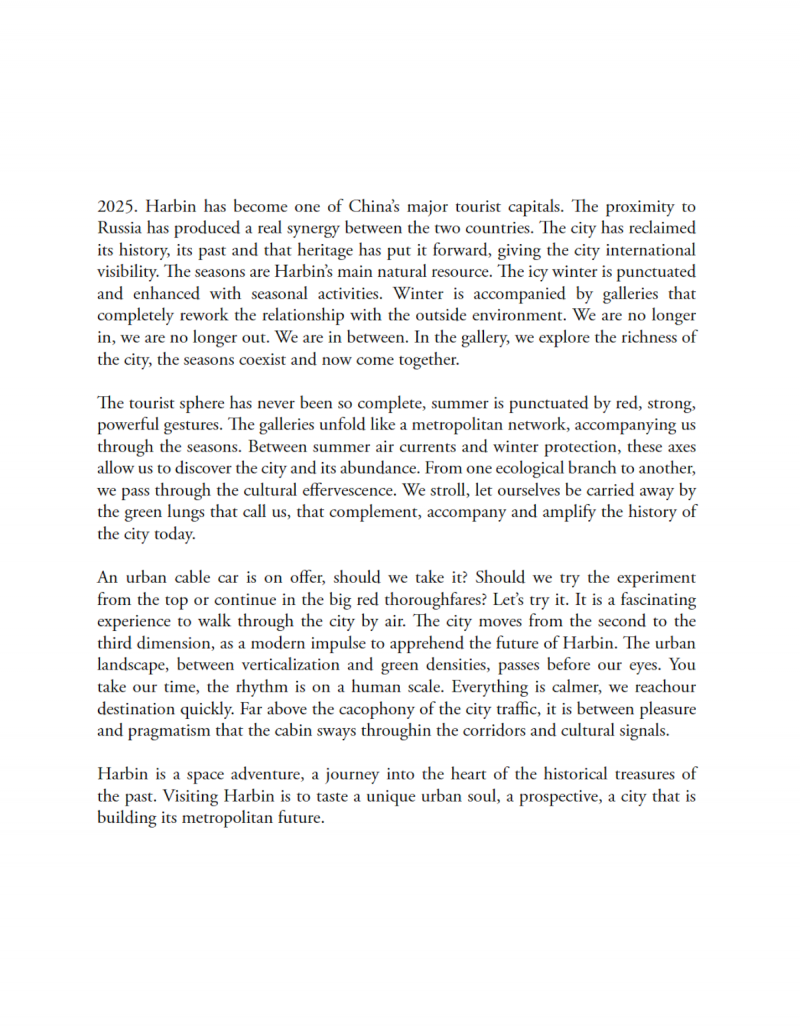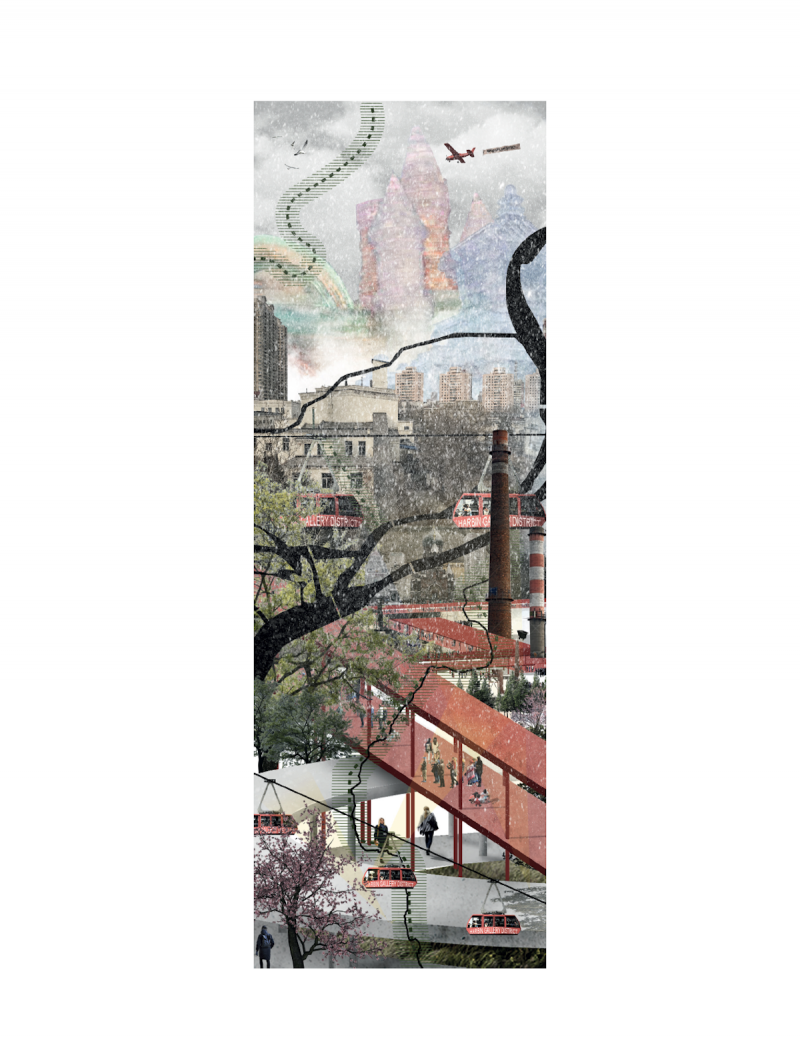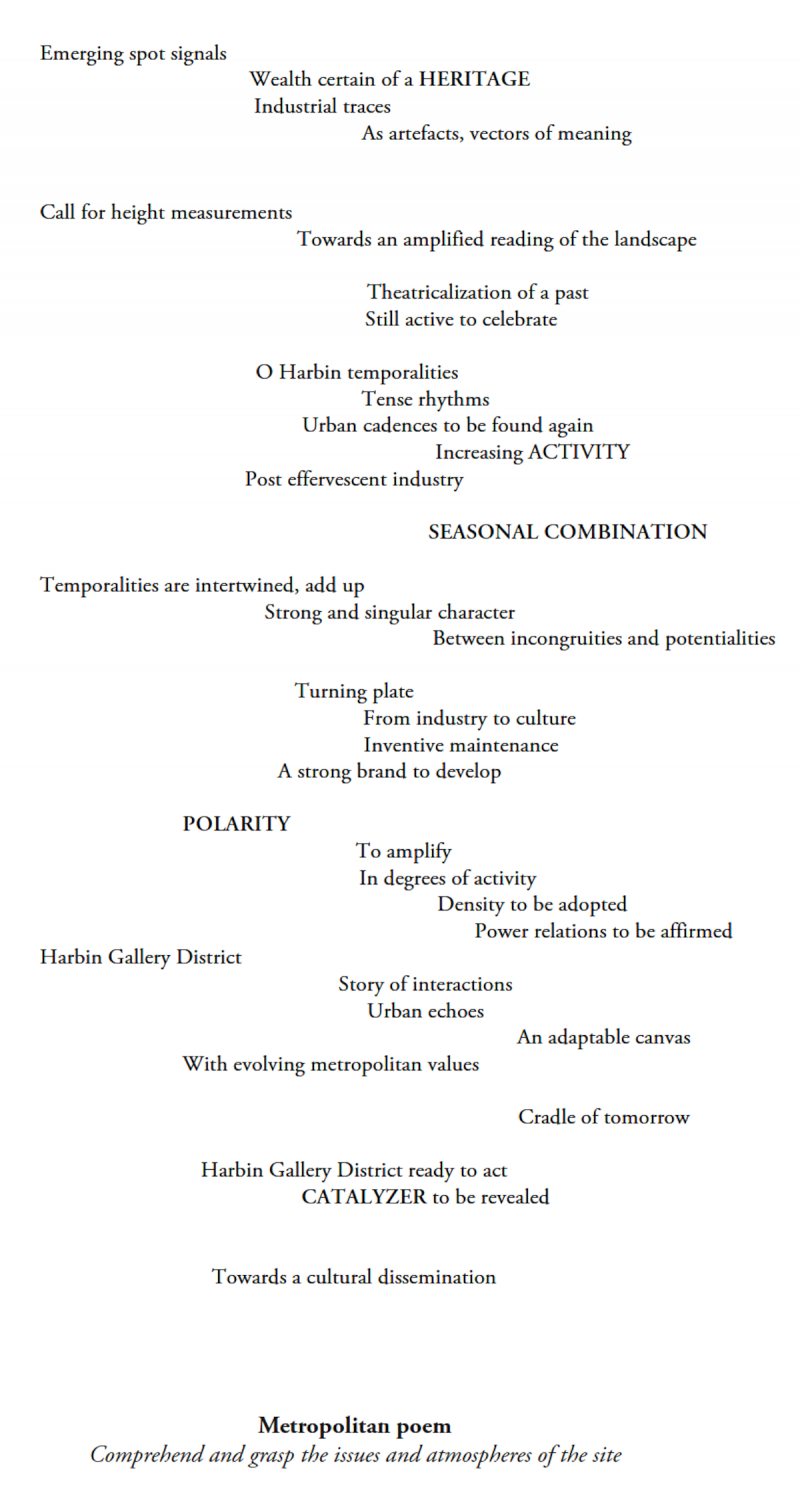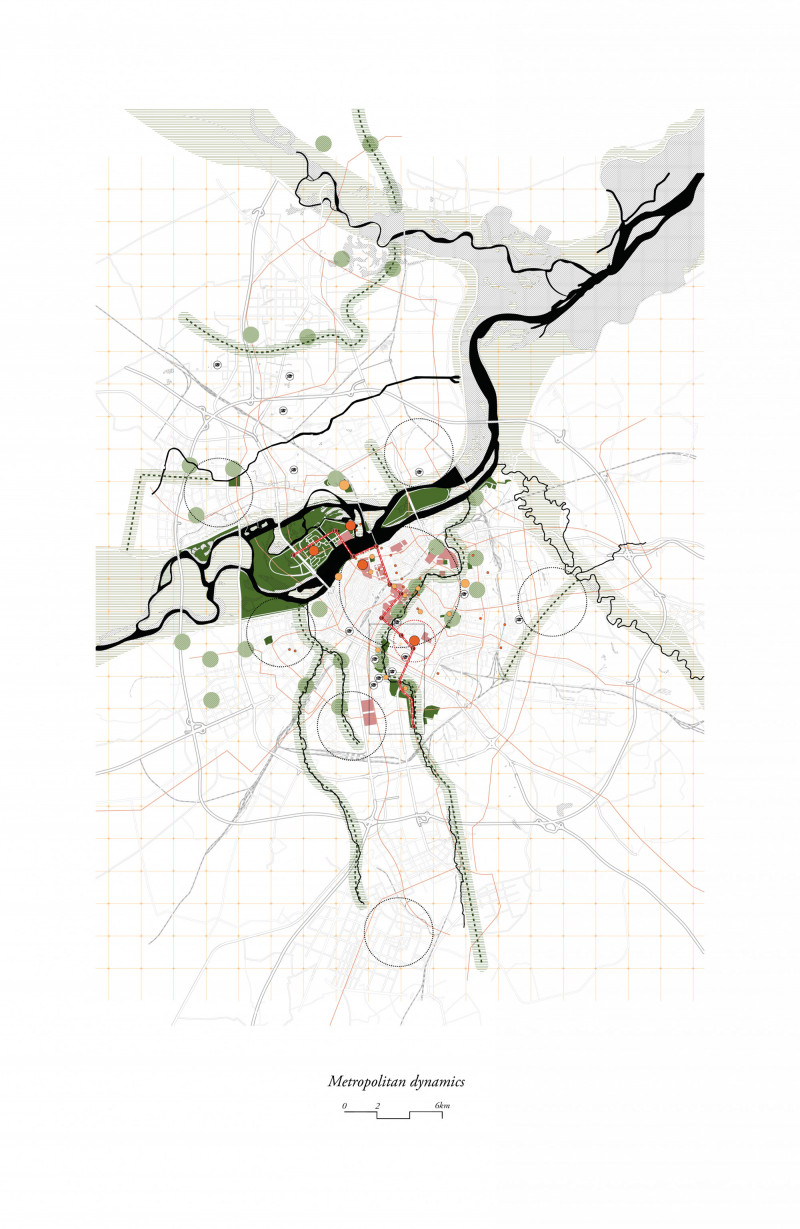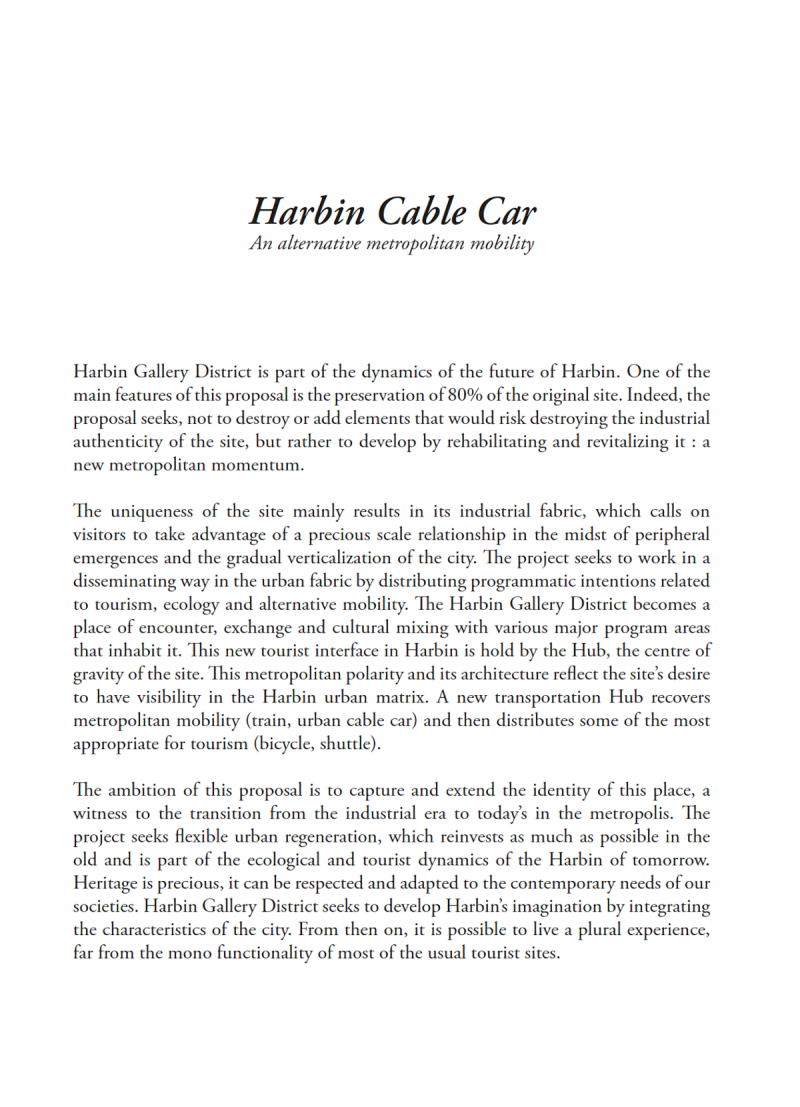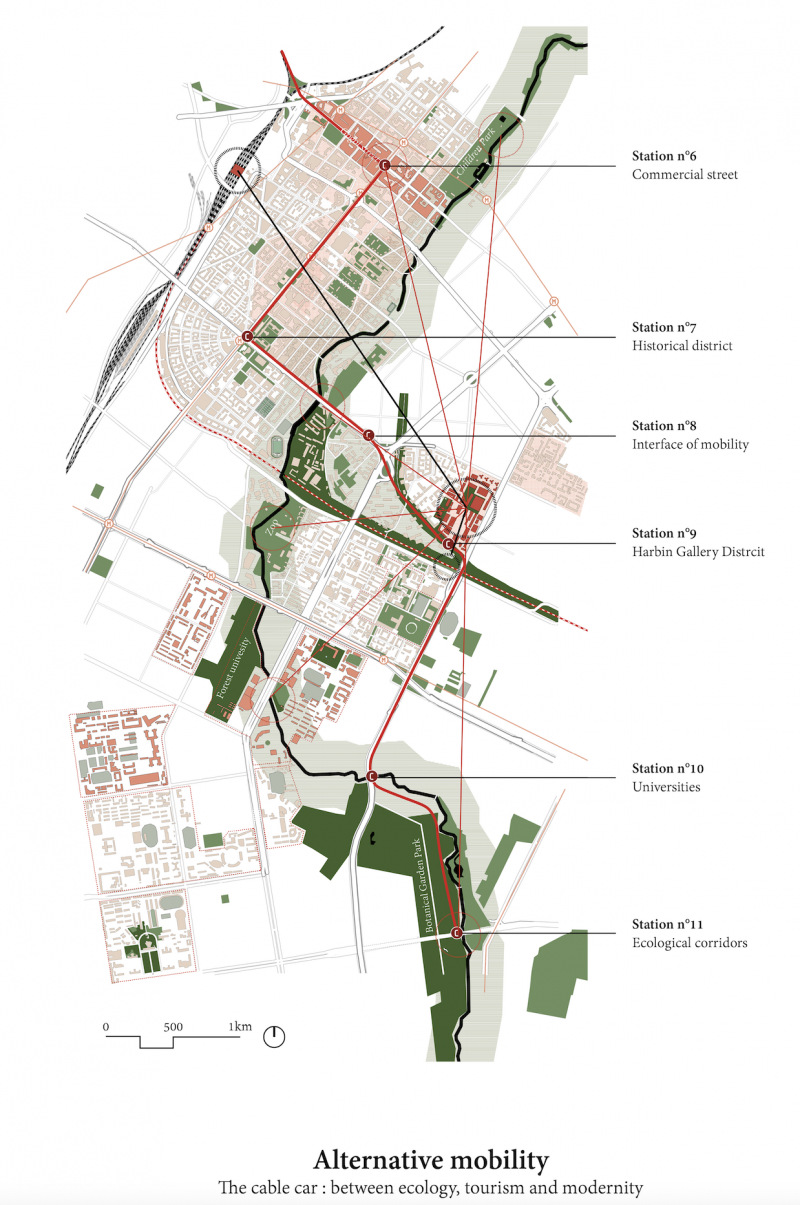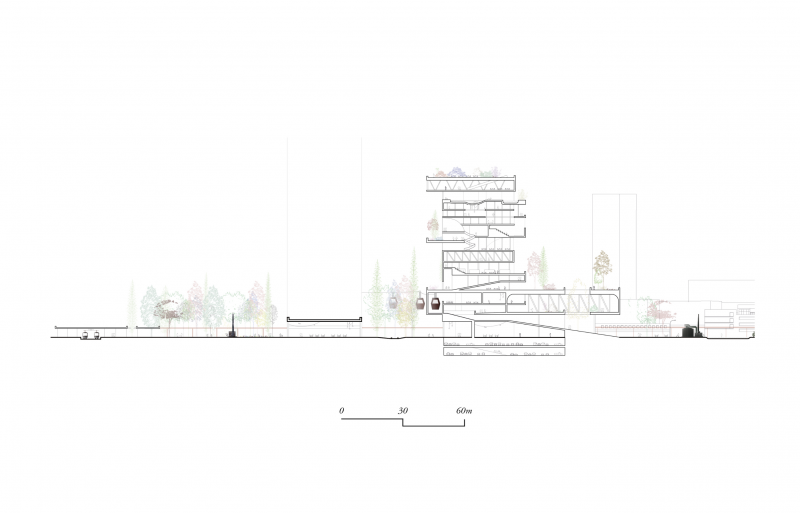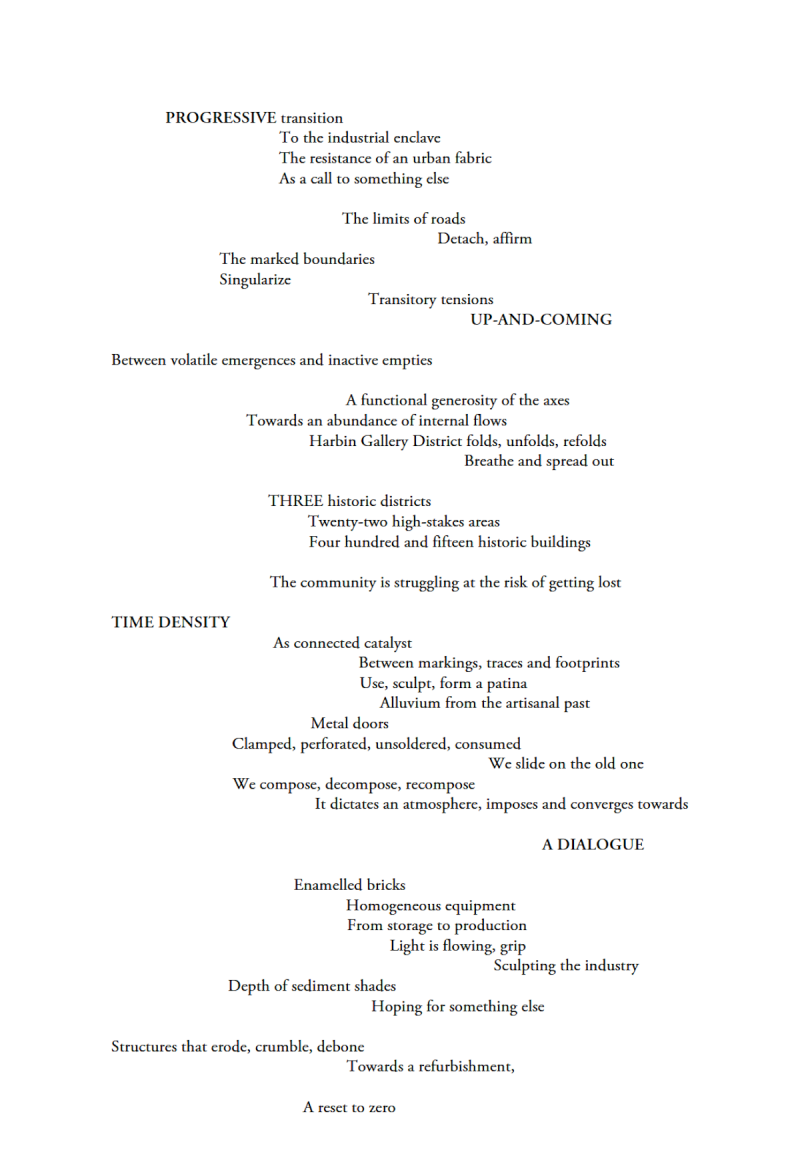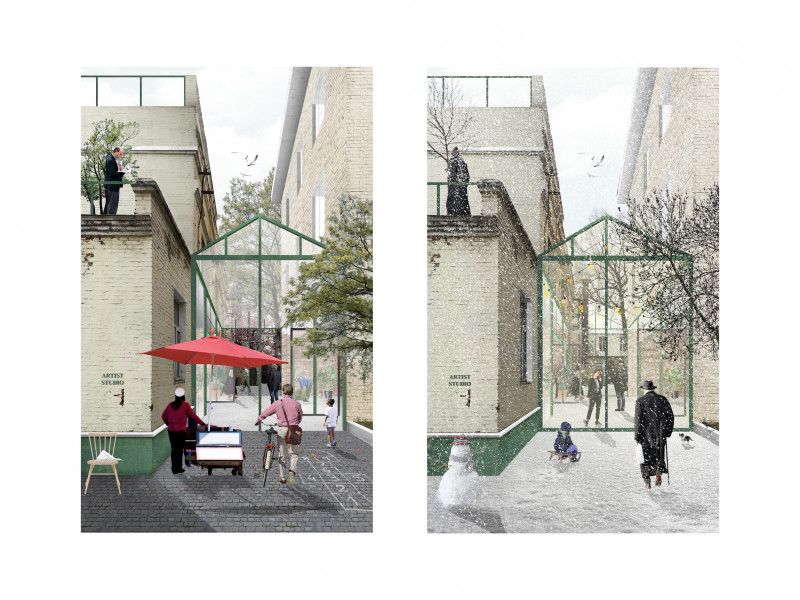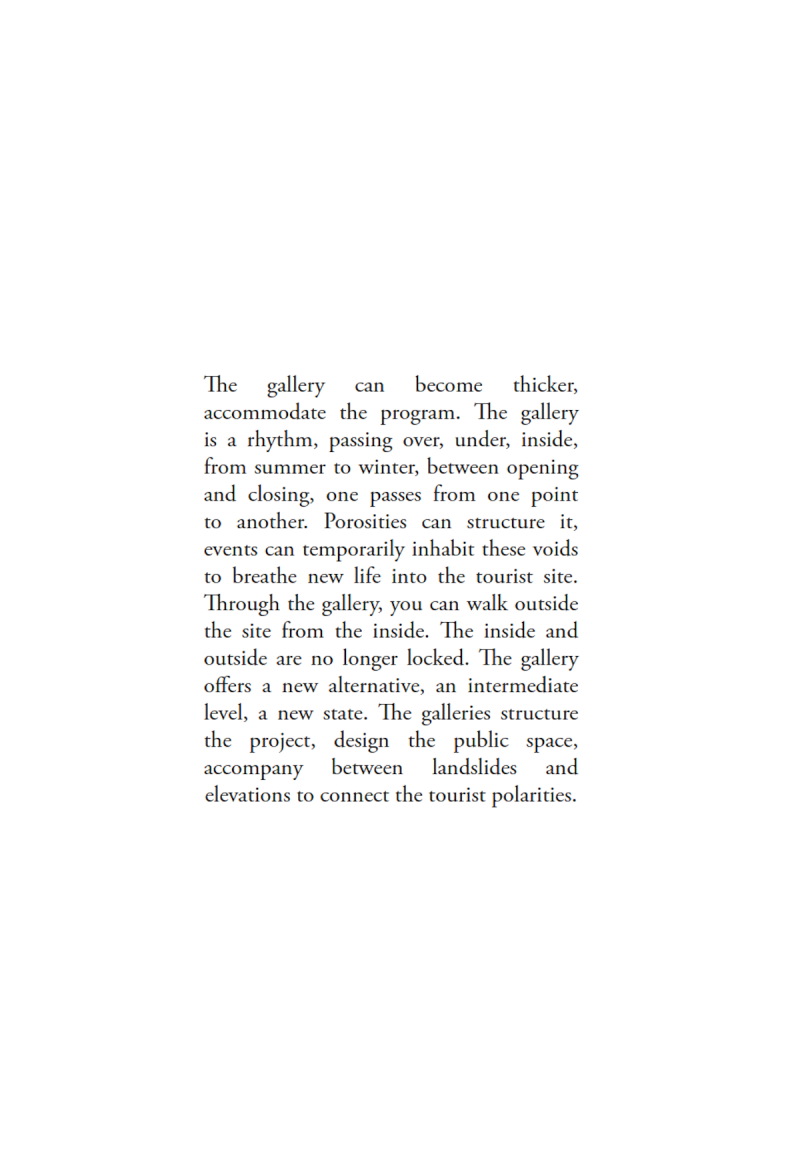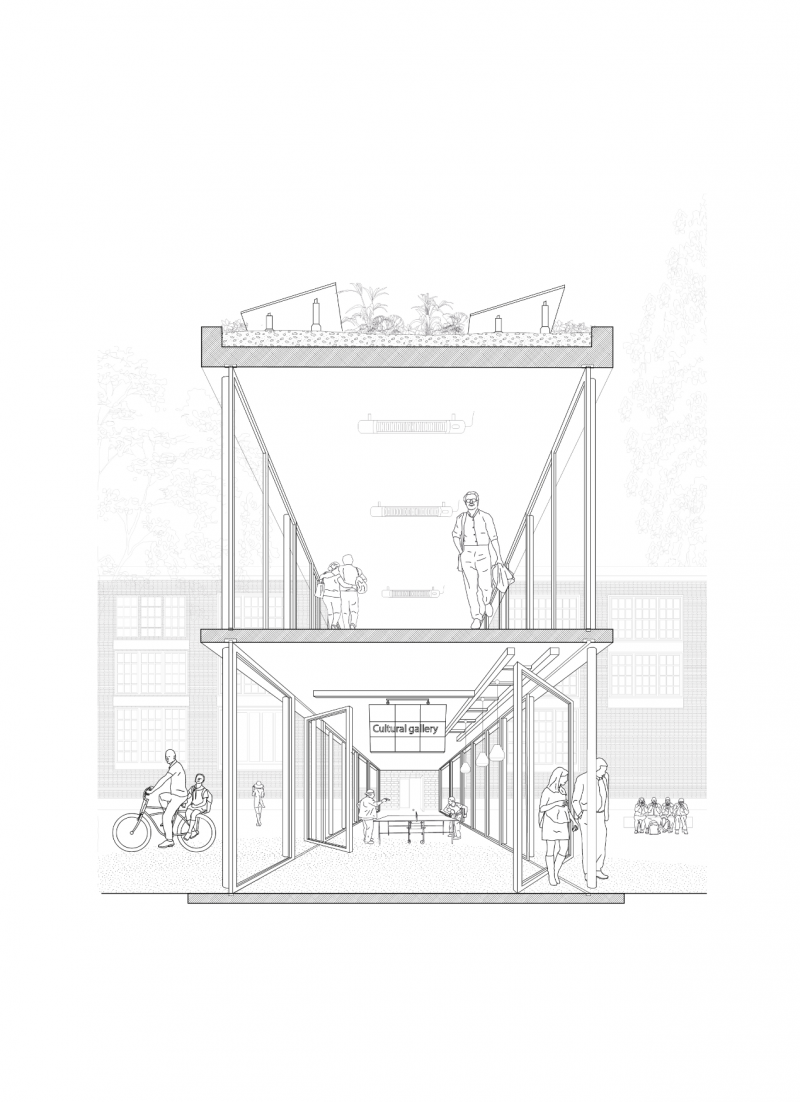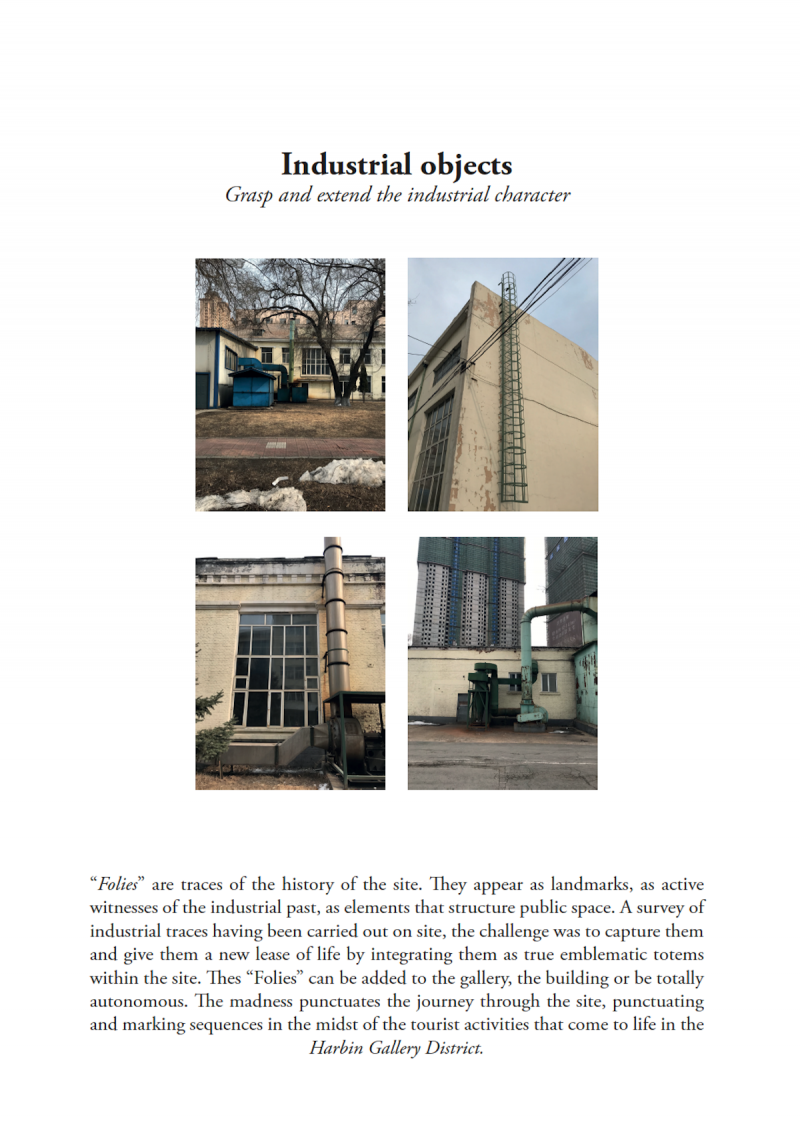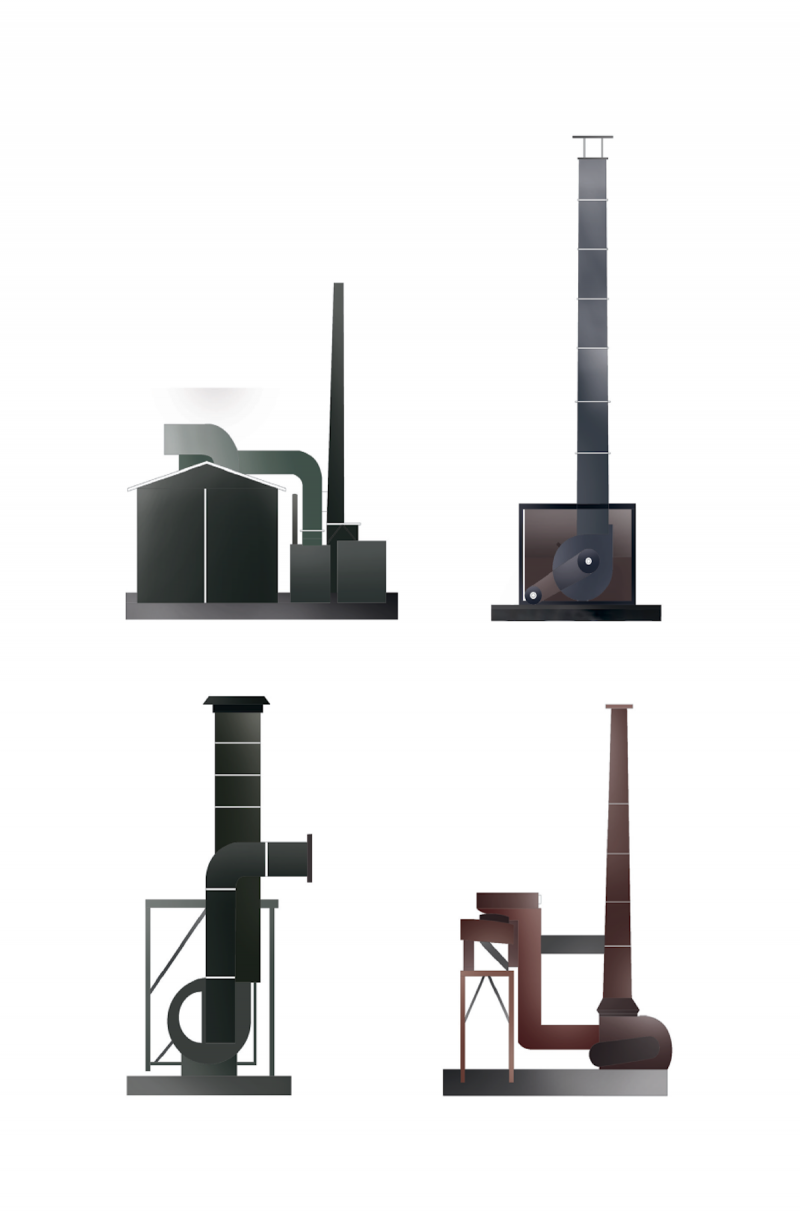Harbin Gallery District
Located in the city of Harbin (Northen China), the scenario-driven project proposes a system of galleries through existing industrial heritage sites to provide year-round and ecologically-minded programs to support responsible tourism, sustainable mobility, and the active cultural life of Harbin. By adapting to strong seasonal variations, harnessing rich landscape features, and proposing new urbanities and metropolitan facilities, Harbin Gallery District reflects a qualitative vision for the project across multiple scales and temporalities, while maintaining a certain modesty of intervention.
Design concept brief:
Harbin Gallery District is anchored in the dynamics of the future of Harbin. One of the main features of this proposal is the preservation of 80% of the original site. Indeed, the project does not seek to remove or add elements that would risk destroying the industrial character of the site. The approach seeks to build on the existing to develop, amplify and give it astandingin the urban matrix of Harbin: towards a new metropolitan momentum.
The singularity of the site results mainly in its industrial fabric, which invites on visitors to take advantage of a precious relationship of scales in the progressive verticalization of the city. The project seeks to work in a way that disseminates its concept through the urban fabric by distributing proposals related to tourism, ecology and alternative mobility. The Harbin Gallery District becomes a place of encounter, exchange and cultural mixing by forging links with the city’s tourist network. This new interface is overseen, guided by the Hub, the site’s centre of gravity. This metropolitan polarity and its architecture reflect a desire for the site to have visibility and interconnection at the scale of the city. The Hub gathers metropolitan transport (train, cable car, automobile) and then includes some of the most appropriate means of mobility for tourism (pedestrian, bicycle, shuttle). Through the galleries, we pass through between the seasons, as the proposal does not separate winter from summer but seeks to join them together in order to exploit their potential and qualities.
The ambition of this proposal is to capture and extend the character of this place, a witness to the transition from the industrial era to today’s metropolis. The project seeks flexible urban regeneration, seeks to reinvest as much as possible into what remains of the past, but in order to be part of the ecological and tourist dynamics of the Harbin of tomorrow. As industrial heritage is precious, the project seeks to respect it and adapt it to the contemporary needs of Harbin and its people. Harbin Gallery District aims to develop the imagination of the metropolis by drawing on the uniqueness of this city. From then on, it becomes possible to live a plural experience that takes advantage of the remarkable seasons, events, festivals and activities that punctuate this new centrality.
Harbin Gallery District was developed at ENSA Strasbourg by ENSAS-CAUP Tongji double master's students Claire Neff and Pierre-Alexis Rety . Associate Professor Andreea Grigorovschi supervised the team within the framework of the Chair of Innovative Metropolitan Mobility (IMM Chair) at the Strasbourg National School of Architecture, with support from urban poet Jeremy Allan Hawkins, environmental engineer Emmanuel Ballot, and urbanism doctor Fan Lang.
The project was awarded the "Green Dot Excellence Award" (1st prize) of the International Green Dot Competition. The award ceremony was held in Harbin on June 29-30, 2019.




